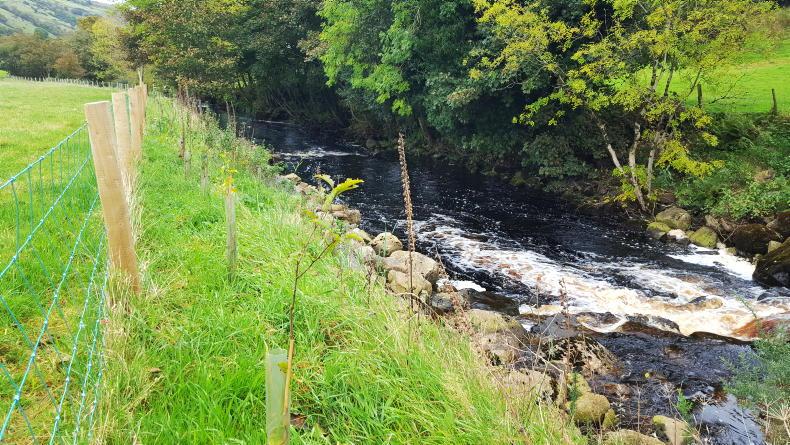The new Agri-Climate Rural Environment Scheme (ACRES) is the new agri-environment scheme under Ireland’s CAP strategic plan.
ACRES contracts for successful tranche 1 applicants are to start from 1 January 2023.
Below are some of the measures to be implemented on farm, as well as the environmental benefits that they will deliver.
Planting trees and hedgerows
Trees and hedgerows provide many benefits to farmers, from crop protection, improved biosecurity, water quality protection and carbon sequestration to shelter for livestock.
They also provide pollen and nectar for pollinators and are an important foraging habitat for mammals.
A hedgerow over 1.8m high, with a wide base and a mix of woody species for an extended pollen and nectar season, as well as some mature trees, provides the greatest benefit for biodiversity.
Extensively grazed pasture and low-input pasture
These actions encourage farmers to maintain environmentally friendly farming systems on selected parcels of land.
These lands that are extensively grazed with low inputs provide a greater environmental return for biodiversity, soil structure and water quality. These areas are also of benefit to pollinators.
Low-input grassland is a results-based measure, which means that fields are assessed through questions on a score card and given a quality score.
Threats or risks to the ecological integrity or the future conservation quality of the field are also assessed. The payment received is linked to the quality of the environmental outcome delivered.
Riparian buffer strips/zones
These areas protect water quality by intercepting the loss of sediment and nutrients from soil surfaces after they have been mobilised.
This measure also takes small areas out of production, thereby reducing the nutrient load, while also supporting biodiversity.
Riparian zones can be created beside small streams, surface drains, rivers, lakes or ponds and are targeted to areas on farm identified as high risk for the loss of phosphorous and sediment through overland flow and surface run off in the Environmental Protection Agency (EPA) pollution impact potential-phosphorous (PIP-P) maps.
Winter bird food
Establishing a winter bird food crop, which is specific to the needs of numerous farmland species, has proven to be successful across Europe.
The spring-sown winter bird food mixes provide a concentrated seed source, so even small areas can have a big impact by supporting a range of bird species.
Traditional dry stone wall maintenance
This action aims to maintain the network of traditional freestanding dry stone walls, which are an important part of Ireland’s cultural heritage. As well as providing shelter for livestock, dry stone walls also act as nature corridors.






 This is a subscriber-only article
This is a subscriber-only article










SHARING OPTIONS: